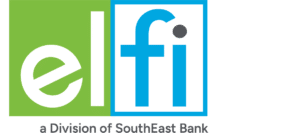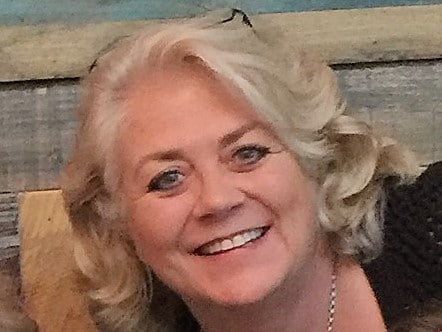If you’re a dentist and graduated with 6-figure student loan debt, you are not alone in wondering how to pay off dental school debt. While only 17% of graduates from dental school graduated with no reported debt, the majority of dentists today are carrying a substantial student loan burden.
According to the American Dental Education Association (ADEA), those who graduated from public universities have an average of $261,226 in student loan debt, while those who attended private schools are carrying an even higher average of $354,900.
The good news is that dentists are excellent candidates for student loan refinancing and other forms of alternative payoffs due to their high income, according to the ADEA.
The not-so-good news is many dentists are carrying loans with interest rates as high as 10.5%. In addition to high loan fees, many in the dental industry are experiencing reduced income as insurance plans are negotiating lower and lower reimbursement rates for dental procedures. This reduced income eats directly into their ability to pay off student loans.
8 Strategies for Paying Off Dental School Student loans
Let’s look at eight strategies that can help you pay off dental school loans so you can focus on other financial goals, like saving for retirement, buying a new home, or saving for your child’s college.
Don’t Count on Federal Student Loan Forgiveness
First, a quick word about student loan forgiveness — you have probably been hearing about the possibility of the federal government agreeing to forgive student loans. When weighing that option, be sure to research what that means for people with advanced degrees or talk with a financial professional.
So far, it appears that any forgiveness will be focused on people with lower incomes or those who are financially disadvantaged in some way and have federal student loans. Private student loans do not qualify for forgiveness.
So, let’s look at how you can pay off those student loans.
1. Pay More Than the Minimum
Paying more than the minimum amount due each month is a strategy that’s a win-win-win!
- Win #1 — You are able to eliminate your debt faster.
- Win #2 — Save money on interest charges over the life of the loan.
- Win #3 — You can maintain or improve your credit score by reducing your outstanding debt.
You can do this successfully by adding an additional amount on each monthly payment. Or, if you’re paid bi-weekly, schedule half of each month’s payment from every paycheck. At the end of the year, you’ll have a full payment to dedicate towards principal only.
Just be sure your loan servicer doesn’t have pre-payment penalties before paying more than your minimum payment.
2. Use All Additional Windfalls to Make a Difference
If you receive additional money through the year, pay the extra cash directly towards your student loans. Windfalls can include:
- Sign-on or year-end bonuses
- Tax refunds
- Lump sum payments or proceeds from the sale of property
- Inheritances or winnings
The 2 Best Companies to Refinance Student Loans
Our Top-Rated Picks for 2024 Offer Low Rates and No Fees

1. Earn Additional Income Working as a Locum Tenens
Often when people look at how to pay off dental school debt, they will look at taking on additional work.
Without a doubt, Locum Tenens (or temporary, fill-in) work can pay extremely well. Temporary part-time and full-time positions are available to cover vacations, unfilled hours, or staff shortages. And that income can be used to pay down student loans.
It can also be a great way to travel and experience different communities before settling in a single spot.
2. Consider State Loan Forgiveness Programs
Beyond scholarship programs, most states have loan forgiveness or repayment programs that are awarded to dentists and other healthcare professionals. Options include practicing in underserved locations, such as designated Health Professional Shortage Areas (HPSAs), or working with at-risk populations.
Each state’s programs are administered by their state authority, so it may require some investigation to secure the right option. These programs can cover both federal and private student loans and can commonly include annual lump sum payments in the range of $20,000 to $35,000.
The only caveat to student loan forgiveness: in many situations, the loan amount that’s forgiven is subject to taxation as regular income. Be sure to check with your financial advisor before agreeing to participate.
3. Apply for the Federal PSLF Program
As someone with a dental degree, you are eligible to apply for the federal Public Service Loan Forgiveness Program (PSLF). It’s available to healthcare professionals with federal student loans who work full-time in a qualifying practice or clinic.
With PSLF participation, you make 120 consecutive payments (10 years) and then you’re eligible for loan forgiveness on the remaining balance. The balance is not subject to income tax.
4. Income-Driven Repayment Plans
The federal Income-Driven Repayment Plans (IDR) may be a long shot for dentists since participation is based on financial need. But if you feel your monthly payments are too high, then IDR may be worth exploring.
There are four plans available, including:
· Income-Based Repayment (IBR)
· Income-Contingent Repayment (ICR)
· Pay As You Earn (PAYE)
· Revised Pay As You Earn (RePAYE)
These plans structure your loan repayment term to 20 or 25 years, and the payment is based on a percentage of your discretionary income.
5. Direct Consolidation
The federal Direct Consolidation program allows you to bundle all your federal loans into a single loan package and extend the repayment term up to 30 years.
With this option, you aren’t getting a lower interest rate since the new loan will have an average interest rate based on all of the loans consolidated. However, some borrowers choose this option to simplify their payments and extend their loan term for a lower monthly payment.
6. Refinance Your Student Loans
There are still great interest rates available when refinancing student loans. Rising interest rates and inflation are all over the news, but many private refinance lenders still offer rates that allow you to save money.
For example, if the average interest rate on your combined student loans is 10.5% on a total of $250,000 to be paid over 10 years, your monthly payment is about $3,373, plus you will be paying over $154K in interest.
If you refinance that same amount to a fixed rate of 4.1%, your monthly payment will change to $2,543 and you will pay only $55K in total interest. By continuing to pay the original amount (about $800 more each month), you would pay your loan off almost 3 years faster.
See How Much You Can Save
Student Loan Payoff Calculator
View Details
Collapse
Check how long it will take you to pay off your student loans. Quickly see the effects of lower rates, extra payments, and different terms on your repayment plan.
Results
| Current Payment | w/ extra payment | Difference | |
|---|---|---|---|
| Term | 10 years | — | — |
| Payoff Date | — | — | |
| Total Interest | $16,560 | — | — |
Want to lower your rate to help pay off student loans faster? Check your rate at our top-rated lenders in 2 minutes, with no impact on credit.
When Refinancing, How Do You Find the Best Lender?
If you are considering refinancing to pay off dental school debt, it’s important to evaluate different lenders to compare their interest rates, terms, and special offers or programs. Fortunately, you can do that by visiting a marketplace site like Purefy to compare offers from top-tier lenders.
When using a student loan refinancing marketplace, you have the opportunity to get pre-approved offers from a variety of lenders in minutes. You can check rates with no affect on your credit score and no obligation to proceed until you are ready.
Getting a Quote
To get student loan refinancing offers, you’ll enter some personal information, such as:
- Your name, address, contact information, and Social Security number
- Your income (be sure to include paychecks or practice income you pay yourself),
- School attended and highest degree earned (DDS vs. DMD)
- Your total loan amount
- Whether you are a U.S. citizen or permanent resident
After submitting the form, you’ll receive a comparison of interest rates and terms from up to four different lenders. The rate comparison tool will allow you to sort the list to determine the best option for paying off dental school debt.
Applying for a Refinanced Loan
Once you have selected the best lender for your circumstances, you can apply and submit the required documents (like paystubs, tax returns, and payoff statements for your current loans).
There are no application or origination fees and no pre-payment penalties with any of Purefy’s lenders. Once you’re approved, your new lender will pay off your existing loans and create one new loan at the rate and term you choose.
To Summarize
There are a variety of ways to pay off student loans, such as making additional payments or by trading services for loan forgiveness (as with PSLF).
One thing is for certain: it’s a good idea to compare your current interest rates with what’s available — you could save money and pay off your loans sooner.
Compare rates with Purefy today to see if you can start saving money on your dental school student loans.
Interested in Student Loan Refinancing? Compare rates from top-rated lenders and see how much you could save.
Checking your rates takes 2 minutes and has no impact on credit.


















